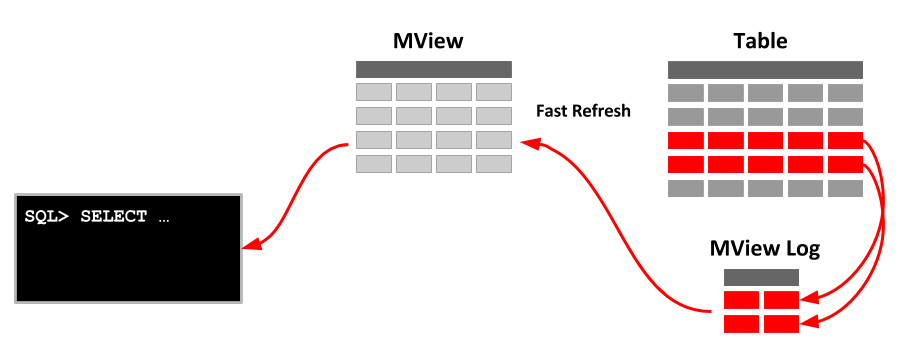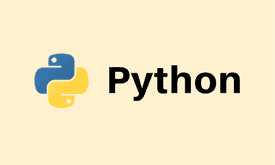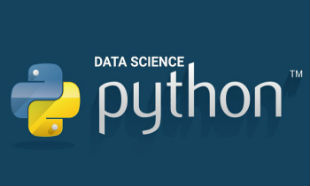-
100% Practical Training
-
Hands
On
Training -
100%
Job
Gurantee
Materialized Views in Oracle |
+91-9080125737 |
Materialized Views in Oracle
A materialized view, or snapshot as they were previously known, is a table segment whose contents are periodically refreshed based on a query, either against a local or remote table.

Using materialized views against remote tables is the simplest way to achieve replication of data between sites. The example code in this article assumes DB1 is the master instance and DB2 is the materialized view site.
- Basic Syntax
- Check Privileges
- Create Materialized View
- Create Materialized View Logs
- Refresh Materialized Views
- Cleaning Up
- Aggregations and Transformations
- Considerations
Basic Syntax
The full syntax description for the CREATE MATERIALIZED VIEW command is available in the documentation. Here we will only concern ourselves with the basics.
-- Normal CREATE MATERIALIZED VIEW view-name BUILD [IMMEDIATE | DEFERRED] REFRESH [FAST | COMPLETE | FORCE ] ON [COMMIT | DEMAND ] [[ENABLE | DISABLE] QUERY REWRITE] AS SELECT ...; -- Pre-Built CREATE MATERIALIZED VIEW view-name ON PREBUILT TABLE REFRESH [FAST | COMPLETE | FORCE ] ON [COMMIT | DEMAND ] [[ENABLE | DISABLE] QUERY REWRITE] AS SELECT ...;
The BUILD clause options are shown below.
- IMMEDIATE : The materialized view is populated immediately.
- DEFERRED : The materialized view is populated on the first requested refresh.
The following refresh types are available.
- FAST : A fast refresh is attempted. If materialized view logs are not present against the source tables in advance, the creation fails.
- COMPLETE : The table segment supporting the materialized view is truncated and repopulated completely using the associated query.
- FORCE : A fast refresh is attempted. If one is not possible a complete refresh is performed.
A refresh can be triggered in one of two ways.
- ON COMMIT : The refresh is triggered by a committed data change in one of the dependent tables.
- ON DEMAND : The refresh is initiated by a manual request or a scheduled task.
The QUERY REWRITE clause tells the optimizer if the materialized view should be consider for query rewrite operations. An example of the query rewrite functionality is shown below.
The ON PREBUILT TABLE clause tells the database to use an existing table segment, which must have the same name as the materialized view and support the same column structure as the query.
Check Privileges
Check the user who will own the materialized views has the correct privileges. At minimum they will require the CREATE MATERIALIZED VIEW privilege. If they are creating materialized views using database links, you may want to grant them CREATE DATABASE LINK privilege also.
CONNECT sys@db2 GRANT CREATE MATERIALIZED VIEW TO scott; GRANT CREATE DATABASE LINK TO scott;
Create Materialized View
Connect to the materialized view owner and create the database link and the materialized view itself.
CONNECT scott/tiger@db2 CREATE DATABASE LINK DB1.WORLD CONNECT TO scott IDENTIFIED BY tiger USING 'DB1.WORLD'; CREATE MATERIALIZED VIEW emp_mv BUILD IMMEDIATE REFRESH FORCE ON DEMAND AS SELECT * FROM emp@db1.world;
Alternatively, we could have used a prebuilt table, as shown below.
-- Create the tale first. This could be populated -- using an export/import. CREATE TABLE emp_mv AS SELECT * FROM emp@db1.world; -- Build the materialized view using the existing table segment. CREATE MATERIALIZED VIEW emp_mv REFRESH FORCE ON DEMAND ON PREBUILT TABLE AS SELECT * FROM emp@db1.world;
Remember to gather stats after building the materialized view.
BEGIN
DBMS_STATS.gather_table_stats(
ownname => 'SCOTT',
tabname => 'EMP_MV');
END;
/
Since a complete refresh involves truncating the materialized view segment and re-populating it using the related query, it can be quite time consuming and involve a considerable amount of network traffic when performed against a remote table. To reduce the replication costs, materialized view logs can be created to capture all changes to the base table since the last refresh. This information allows a fast refresh, which only needs to apply the changes rather than a complete refresh of the materialized view.
To take advantage of the of the fast refresh, connect to the master instance and create the materialized view log.
CONNECT scott/tiger@db1 CREATE MATERIALIZED VIEW LOG ON scott.emp TABLESPACE users WITH PRIMARY KEY INCLUDING NEW VALUES;
Refresh Materialized Views
If a materialized view is configured to refresh on commit, you should never need to manually refresh it, unless a rebuild is necessary. Remember, refreshing on commit is a very intensive operation for volatile base tables. It makes sense to use fast refreshes where possible.
For on demand refreshes, you can choose to manually refresh the materialized view or refresh it as part of a refresh group.
The following code creates a refresh group defined to refresh every minute and assigns a materialized view to it.
BEGIN
DBMS_REFRESH.make(
name => 'SCOTT.MINUTE_REFRESH',
list => '',
next_date => SYSDATE,
interval => '/*1:Mins*/ SYSDATE + 1/(60*24)',
implicit_destroy => FALSE,
lax => FALSE,
job => 0,
rollback_seg => NULL,
push_deferred_rpc => TRUE,
refresh_after_errors => TRUE,
purge_option => NULL,
parallelism => NULL,
heap_size => NULL);
END;
/
BEGIN
DBMS_REFRESH.add(
name => 'SCOTT.MINUTE_REFRESH',
list => 'SCOTT.EMP_MV',
lax => TRUE);
END;
/
A materialized view can be manually refreshed using the DBMS_MVIEW package.
EXEC DBMS_MVIEW.refresh('EMP_MV');
Rather than using a refresh group, you can schedule DBMS_MVIEW.REFRESH called using the Oracle Scheduler
Cleaning Up
To clean up we must remove all objects.
CONNECT scott/tiger@db2 DROP MATERIALIZED VIEW emp_mv; DROP DATABASE LINK DB1.WORLD; BEGIN DBMS_REFRESH.destroy(name => 'SCOTT.MINUTE_REFRESH'); END; / CONNECT scott/tiger@db1 DROP MATERIALIZED VIEW LOG ON scott.emp;
Aggregations and Transformations
Materialized views can be used to improve the performance of a variety of queries, including those performing aggregations and transformations of the data. This allows the work to be done once and used repeatedly by multiple sessions, reducing the total load on the server.
The following query does an aggregation of the data in the EMP table.
CONN scott/tiger SET AUTOTRACE TRACE EXPLAIN SELECT deptno, SUM(sal) FROM emp GROUP BY deptno; --------------------------------------------------------------------------- | Id | Operation | Name | Rows | Bytes | Cost (%CPU)| Time | --------------------------------------------------------------------------- | 0 | SELECT STATEMENT | | 3 | 21 | 4 (25)| 00:00:01 | | 1 | HASH GROUP BY | | 3 | 21 | 4 (25)| 00:00:01 | | 2 | TABLE ACCESS FULL| EMP | 14 | 98 | 3 (0)| 00:00:01 | ---------------------------------------------------------------------------
Create a materialized view to perform the aggregation in advance, making sure you specify the ENABLE QUERY REWRITE clause.
CREATE MATERIALIZED VIEW emp_aggr_mv BUILD IMMEDIATE REFRESH FORCE ON DEMAND ENABLE QUERY REWRITE AS SELECT deptno, SUM(sal) AS sal_by_dept FROM emp GROUP BY deptno; EXEC DBMS_STATS.gather_table_stats(USER, 'EMP_AGGR_MV');
The same query is now rewritten to take advantage of the pre-aggregated data in the materialized view, instead of the session doing the work for itself.
--ALTER SESSION SET QUERY_REWRITE_INTEGRITY = TRUSTED; --ALTER SESSION SET QUERY_REWRITE_ENABLED = TRUE; SET AUTOTRACE TRACE EXPLAIN SELECT deptno, SUM(sal) FROM emp GROUP BY deptno; -------------------------------------------------------------------------------------------- | Id | Operation | Name | Rows | Bytes | Cost (%CPU)| Time | -------------------------------------------------------------------------------------------- | 0 | SELECT STATEMENT | | 3 | 21 | 3 (0)| 00:00:01 | | 1 | MAT_VIEW REWRITE ACCESS FULL| EMP_AGGR_MV | 3 | 21 | 3 (0)| 00:00:01 | --------------------------------------------------------------------------------------------
Considerations
Before using materialized views and materialized view logs, consider the following:
- Populating a materialized view adds load to both servers involved. The source server is queried to capture the data, which is inserted into the destination server. Be sure the additional load does not adversely affect your primary system.
- Although materialized view logs improve the performance of materialized view refreshes, they do increase the work needed to perform DML on the base table. Check the additional work does not adversely affect performance on the primary system.
- If regular refreshes are not performed, materialized view logs can grow very large, potentially reducing the performance of their maintenance and blowing tablespace limits.
- Depending on the Oracle version and the complexity of the associated query, fast refreshes may not be possible.
- When using materialized views to improve performance of transformations and aggregations, the
QUERY_REWRITE_INTEGRITYandQUERY_REWRITE_ENABLEDparameters must be set or the server will not be able to automatically take advantages of query rewrites. These parameters may be set in the pfile or spfile file if they are needed permanently. Later releases have them enabled by default.

"I thought I knew Oracle SQL until I took this course. My company sent me here against my will. It was definitely worth and I found out how many things I was doing wrong. Karthik is awesome. but i got a lot inspired by you. I will keep in touch and will always try to learn from you as much as I can. Thanks once again Karthik"
Greens Technologys Overall Reviews
Greens Technologys Overall Reviews
 5
out of 5
based on 17,981 ratings.
17,981 user reviews.
5
out of 5
based on 17,981 ratings.
17,981 user reviews.





 25256
25256


